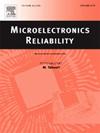用于 SAC305 激光焊接缺陷检测的新型多信息融合 CNN
IF 1.6
4区 工程技术
Q3 ENGINEERING, ELECTRICAL & ELECTRONIC
引用次数: 0
摘要
电子封装中无铅焊料 Sn-3.0Ag-0.5Cu (SAC305) 的激光焊接鉴定仍是一项巨大的挑战。在大规模生产中很难检测到缺陷。这项工作提出了一种基于多信息融合卷积神经网络(MIFCNN)的识别模型,用于检测激光焊接过程。在该方法中,按时间顺序排列的 40 幅图像与温度数据相结合,作为检测缺陷的输入。结果表明,由于结合了图像和温度信息,MIFCNN 对三种类型焊点的准确率最高,达到 98.28%。而 ICNN 和 TCNN 对翘曲缺陷的识别准确率较低,分别为 73.9 % 和 66.5 %。这是因为图像和温度信息分别是识别润湿不良缺陷和翘曲缺陷的关键。润湿不良缺陷可通过接触角的差异识别,而翘曲缺陷则可通过最高温度显著识别。这项工作有助于在实际生产中检测激光焊接缺陷,并拓宽了 MIFCNN 在激光焊接领域的应用。本文章由计算机程序翻译,如有差异,请以英文原文为准。
A novel multi-information fusion CNN for defect detection in laser soldering of SAC305
Identification of laser soldering of lead-free solder Sn-3.0Ag-0.5Cu (SAC305) in electronic packaging was still an enormous challenge. It was difficult to detect defects in large-scale production. This work proposed an identification model based on multi-information fusion convolutional neural network (MIFCNN) for inspecting laser soldering process. In this method, the forty images in chronological order and the temperature data were combined as the input to be utilized in detecting defects. The results demonstrated that MIFCNN had best accuracy for three types of joints with accuracy of 98.28 % due to the combination of images and temperature information. The ICNN and TCNN had poor recognition accuracy for the warpage defect with 73.9 % and the poor wetting defect with 66.5 %, respectively. This was because the images and temperature information were the key to identifying the poor wetting defects and warpage defects, respectively. The poor wetting defect could be recognized by difference of contact angle, while the warpage defect could be significantly detected by maximum temperature. This work could help detecting defects of laser soldering in the actual production and widen the application of MIFCNN in the field of laser soldering.
求助全文
通过发布文献求助,成功后即可免费获取论文全文。
去求助
来源期刊

Microelectronics Reliability
工程技术-工程:电子与电气
CiteScore
3.30
自引率
12.50%
发文量
342
审稿时长
68 days
期刊介绍:
Microelectronics Reliability, is dedicated to disseminating the latest research results and related information on the reliability of microelectronic devices, circuits and systems, from materials, process and manufacturing, to design, testing and operation. The coverage of the journal includes the following topics: measurement, understanding and analysis; evaluation and prediction; modelling and simulation; methodologies and mitigation. Papers which combine reliability with other important areas of microelectronics engineering, such as design, fabrication, integration, testing, and field operation will also be welcome, and practical papers reporting case studies in the field and specific application domains are particularly encouraged.
Most accepted papers will be published as Research Papers, describing significant advances and completed work. Papers reviewing important developing topics of general interest may be accepted for publication as Review Papers. Urgent communications of a more preliminary nature and short reports on completed practical work of current interest may be considered for publication as Research Notes. All contributions are subject to peer review by leading experts in the field.
 求助内容:
求助内容: 应助结果提醒方式:
应助结果提醒方式:


